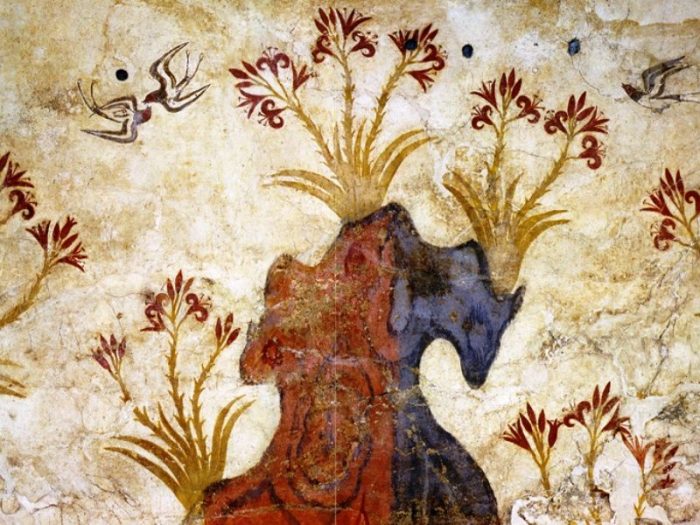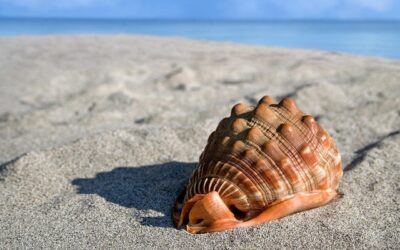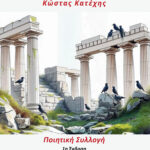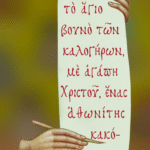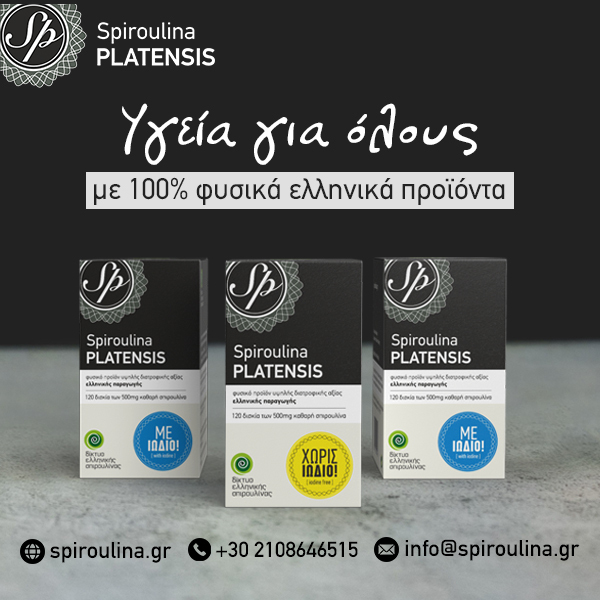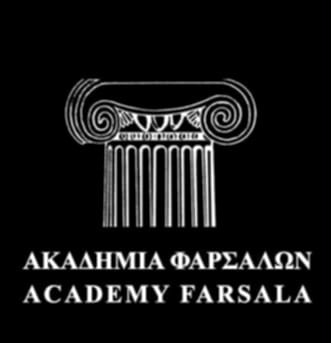Η συνέχεια του άρθρου
EIRENE & CALYPSO
Eirene was the daughter of Kratinos, a painter from whom she learned her painting skills. Pliny said Eirene had painted a female figure at Eleusis. (Kampen 1975 p.11) Kampen also states that Pliny’s word choice is not clear, and therefore creates issues of interpretation. Specifically whether her painting was of an actual girl or was referring to the deity Kore. (Kampen 1975 p.11) This is because the word deity means girl in Ancient Greek.
According to Corbeill, Eirene, “painted the portrait of an old man, Theodorus the conjurer, and a dancer.” (Corbeill, 2017 p 187) These paintings were done by Eirene if we take the idea of Calypso being a painting, and not another painter as mentioned in Fröhner’s interpretation. Corbeill also mentions that Calypso could be the woman Eirene painted; but there is a lack of evidence that can confirm or deny which of these are true. If Calypso was, in fact, a painter then she may have painted the paintings of the old man, Theodorus the conjurer, and the dancer.
Kampen proceeds to discuss how quickly the artwork from then deteriorates so there is no proof that Calypso was a painting by Eirene. But there is no proof that she existed either as almost all of the other women painters in antiquity had a father mentioned who was also a painter within the articles as well. (Corbeill, 2017 p 187) These different interpretations come from the different translations in Pliny’s work based on punctuation indifferences. This is nicely highlighted in Linderski’s paper entitled The Paintress Calypso and Other Painters in Pliny.
“How many women painters are here listed? If we follow Mayhoff’s punctuation, three, it would appear: Timarete, Irene, and Aristarete. But there is a problem: one of Irene’s creations, the nymph Calypso, threatens to become an independent paintress herself. So, at least, if we give ear to the recent and excellent Budé editorand commentator, J-M. Croisille (1985, 99), who places a semicolon after Eleusine, and translates thus: “Calypso a peint un Vieillard, Théodorus l’illusioniste, Alcisthénès le danseur”. In his commentary (256–57) he observes that according to a number of authorities 2 “le nom de Calypso serait un accusatif, et désignerait non une femme-peintre, mais une oeuvre d’Eiréné”, and concludes: “le doubte subsiste, mais l’accusatif Calypso nous paraît peu vraisemblable”.” (Linderski, 2003 p. 342-343)
Linderski goes on to discuss it in a grammatical sense looking at Pliny and how the Latin language works. The name Calypso is being used in an accusative form in between two other accusative words. Puellam (girl) and senem (old). This is where the translations start to have different interpretations. Linderski mentions two different translation sentences which can change the interpretation.
“Plinian Latin, felt discomfort with his own text, and made with respect to Calypso and senem this annotation in his apparatus: “fortasse et delendum. an vero Calypso senex intellegitur opposita puellae?” His alternate text would read as follows: “puellam, quae est Eleusine, Calypso, senem praesti-giatorem Theodorum” or “puellam, quae est Eleusine, Calypso senem et praestigia-torem Theodorum”. Desperate solutions: in particular we do not seem to know anything about the old age of the nymph Calypso.” (Linderski, 2003 pg 343)
The first interpretation “fortasse et delendum. an vero Calypso senex intellegitur opposita puellae?” translates to ‘maybe you and delendum. or the accompaniment of a old grasp opposite ends of the girls?’ (yandex translator latin to english).
The second interpretation “puellam, quae est Eleusine, Calypso, senem praestigiatorem Theodorum” translates to ‘the girl, which is Eleusine, the accompaniment of calypso an aged praestigiatorem Theodorum’ or “the girl, which is Eleusine, the accompaniment of calypso an old and tricks-creator of the fine there Theodorum” (yandex translation Latin to English).
With the first interpretation you get ‘you and another person.’ The original has Calypso in Latin. Since Calypso was in the original line that got translated, it would appear that she was the “another person” in the translation; making her a real person and not the painting Eirene did.
In the second translation we get mentions of four people, and if we go with the original idea that Calypso was one of Eirene’s paintings then the line in question could just be referring to the four paintings.
If discussing whether or not Calypso was her own person then it is highly recommended to read the rest of Linderskis paper, which is linked
Jex-Blake’s translation supports the idea that Calypso was in fact her own painter and not a painting here is his translation: “Irene Cratini pictoris filia et discipula puellam quae est Eleusine, Calypso senem et praestigiatorem Theodorum, Alcisthenen saltatorem, Aristarete Nearchi filia et discipula Aesculapium.” (Plinius pg 170) his translation is “Eirene, the daughter and pupil of the painter Kratinos, Timarete. painted a maiden at Eleusis, Kalypso painted portraits of an old man, of the juggler Theodores, and of the dancer Alkisthenes” (translation by Jex-Blake 1896 pg171)
After seeing all the translations I am more in agreeance that Calypso was her person, as all the evidence is pointing in that direction.
IAIA
Iaia of Kyzuzikos was a painter circa 100 B.C.E She was very popular with her portraits of women. Iaia was also said to have worked rather quickly in tempera (mixing pigments in water and a binder) and encaustic (painting using heated wax and oils). She was said to have been better than the two male painters Sopolis and Dionysios. (Kampen 1975, p.11)
“She was said to be ‘perpetua virgo’ (latin for perpetual virgin) which may help to explain her eminence; she may have been freer of traditional ‘female’ duties then other women.” (Kampen Natalie, 1975, p.11)
It was Plinius who had said “laia Cyzicena perpetua virgo” (Plinius pg 170)
Iaia was also said to have painted a self portrait by using a mirror, and she had also painted mini portraits which were popular within the first century B.C.E.
Iaia was single her whole life she then worked in Rome amongst the youth of Marcus Varro. She was known to be the most rapid painter, and her paintings even sold for a higher price than the works of her male counterparts Sopolis and Dionysios. Both of which have paintings that are still around today.( Frasca-Rath, 2020, p7 )
“Iaia may have used a special technique of encaustic painting, employing chemical reactions to mix fugitive oils with wax in order to brush the paint onto the surface of her works” (Frasca-Rath, Anna, 2020, p7)
This is an example of oil painting as she was mixing her pigments, with oils and waxes so they would stick to surfaces. But this would also prolong the life of the colours as oil-based paints are more sustainable to the elements then those that are water-based.
Kora
Flourished circa 650 B.C.E., Sicyon, ancient Greece
In Pliny the Elder’s Natural History (C.E. 77) and other ancient sources, the potter Dibutades of Sicyon and his daughter Kora (also called Callirhoe) are credited with the invention of modeling in relief in the seventh century B.C.E. The story goes that Dibutades had a young apprentice with whom Kora fell in love. On the night that her lover was to complete his apprenticeship and leave, she used a piece of coal to trace his portrait on the wall. Her father saw the drawing and filled it in with clay, thus creating the first relief, which reputedly remained on the wall for 200 years
ARISTARETE
Next, we have Aristarete who as Kampen mentioned we do not have much information on, and she painted a portrait of the healer Asklepois. Asklepois is said to be a physician god. Since little is known about Asklepois until after the fifth-century B.C.E (Kampen 1975 p.10), due with the fact that she was the daughter of Nearchos who was said to be active from 570-555 B.C.E. that puts her being from the sixth-century B.C.E.
Olympias
Ancient Greek painter. Would have flourished long before the birth of Pliny the Elder in 23 ce.
Olympias is mentioned at the end of Pliny the Elder‘s list of women painters in his Natural History. His notice can be quoted in full: “A certain Olympias also painted; the only fact recorded about her is that Autobulus was her pupil.” Neither Olympias nor Autobulus are mentioned in other Classical sources, so it is impossible to add to Pliny’s scant information. It is worth comment, however, that Olympias is the only woman on the list who is said to have taught her art, and the fact that her student was a man contrasts interestingly with the training that Arista rete, Irene , and perhaps Tim arête are said to have received from their fathers.
Comment by Dimitri Symeonidis JP
What impresses me in the book by Panagiotis Kyriakopoulos and Sofianna Kyriakopoulos: The Ancient Greek. Myths and Truths
On page 334 Entitled Women Painters say
Unfortunately, among the female artists of the visual arts, the only name other than that of Lamia that has been saved to us thanks to the Roman historian Pliny is that of the painter Aristaretes, for whom he mentions that her works were famous and were not inferior in value and fame to those of the great Scopes .
Also on page 330 entitled Women Muses say
Eleni, the famous painter of the Hellenistic period. Many of her works are mentioned by Roman writers, and the most famous of these “the battle of Issus” adorned the mosaic of the headquarters of Pompeii.
In short, they do not tell us the names of the ancient Greek painters who were saved.
I am commenting on this because the authors are dealing with an important topic “The Ancient Greek woman” and they should have been more careful.
Thanks to the ancient Roman Pliny the Elder, some names have survived to our days. (In the book of Pliny the Elder: On Ancient Greek Painting.).
Also Clement of Alexandreus in his book Stromateis: mentions the painter Anaxandra
While in the Library of Photios we will see a part of the lost work of Ptolemy Hennos rescued by Photios where the name of the ancient painter Helen is mentioned.
Also Philostratus the Elder wrote the book “Images” on the subject of Painting and Philostratus the Younger dealt with the same subject.
I think that with this text I have given you almost a complete picture of the ancient Greek painters with their names and their work. I wish the Greek women would show more interest and publish a complete publication on the ancient Greek female artists.
Πηγές – Sources
1.Πλίνιος ο Πρεσβύτερος: Περί της Αρχαίας Ελληνικής Ζωγραφικής. 35ο Βιβλίο της Φυσικής .Αθήνα.Άγρα.2009.
2.Bibliotheque de Photius¨ 190 Ptolémée Chennus
3.Κλήμης ο Αλεξανδρεύς : Στρωματείς , Βιβλίον Δ
Κεφάλαιον 19ον
4.womeninantiquity.wordpress.com/2021/04/03/female-painters/
5.Women Artists In All Agesa And Countries by Mrs Ellet.New York. Harper & Brothers Publishers.1850
6.My-favourite-planet.de/english/people/h1/helena-painter.ht
7.Photius, Patriarch of Constantinople. Opera Omnia. Vol. 3. Edited by J.-P. Migne. Paris: Garnier Fratres, 1900, p. 619 [149.B].
8.SUDA entry pi 3037: Πτολεμαι̂ος (Ptolemy, Ptolemaios)
9.Παναγιώτη Κυριακόπουλου και Σοφιάννα Κυριακοπούλου:Η Αρχαία Ελληνίδα .Μύθοι και Αλήθειες.
10.Ευάγγελου Σπανδάγου: 808 Διακεκριμμένες Γυναίκες της Αρχαίας Ελλάδος
11.Φιλόστρατος.Άπαντα.6. Φιλοστράτου του Νεωτέρου Εικόνες.Αθ΄ληνα,Κάκτος1995.
-
Ingeborg Scheibler: Αρχαία Ελληνική Ζωγραφική. Αθήνα ,ΜΙΕ. 2015.
-
Θησαυρός Ελληνικής Γλώσσας (TLG)
14. Plutarchus Biogr., Phil., De gloria Atheniensium (345c-351b)
Stephanus page 346, section F, line 4Πλὴν ὁ Σιμωνίδης τὴν μὲν ζωγραφίαν ποίησιν
σιωπῶσαν προσαγορεύει, τὴν δὲ ποίησιν ζωγραφίαν λα-
λοῦσαν.
Xenophon Hist., Memorabilia
Book 3, chapter 10, section 1, line 4
ἔφη, ὦ Παρράσιε,
3.10.1.5
γραφική ἐστιν εἰκασία τῶν ὁρωμένων; τὰ γοῦν κοῖλα καὶ
τὰ ὑψηλὰ καὶ τὰ σκοτεινὰ καὶ τὰ φωτεινὰ καὶ τὰ σκληρὰ
καὶ τὰ μαλακὰ καὶ τὰ τραχέα καὶ τὰ λεῖα καὶ τὰ νέα
καὶ τὰ παλαιὰ σώματα διὰ τῶν χρωμάτων ἀπεικάζοντες
3.10.2.1
ἐκμιμεῖσθε
-
Plato Phil., Sophista
Stephanus page 236, section b, line 9Οὐκοῦν πάμπολυ καὶ κατὰ τὴν ζωγραφίαν τοῦτο τὸ
μέρος ἐστὶ καὶ κατὰ σύμπασαν μιμητικήν;
photo https://www.gardenmagazine.gr/ta_loiloidia_stin_arhaia_ellada-fl-90.html


